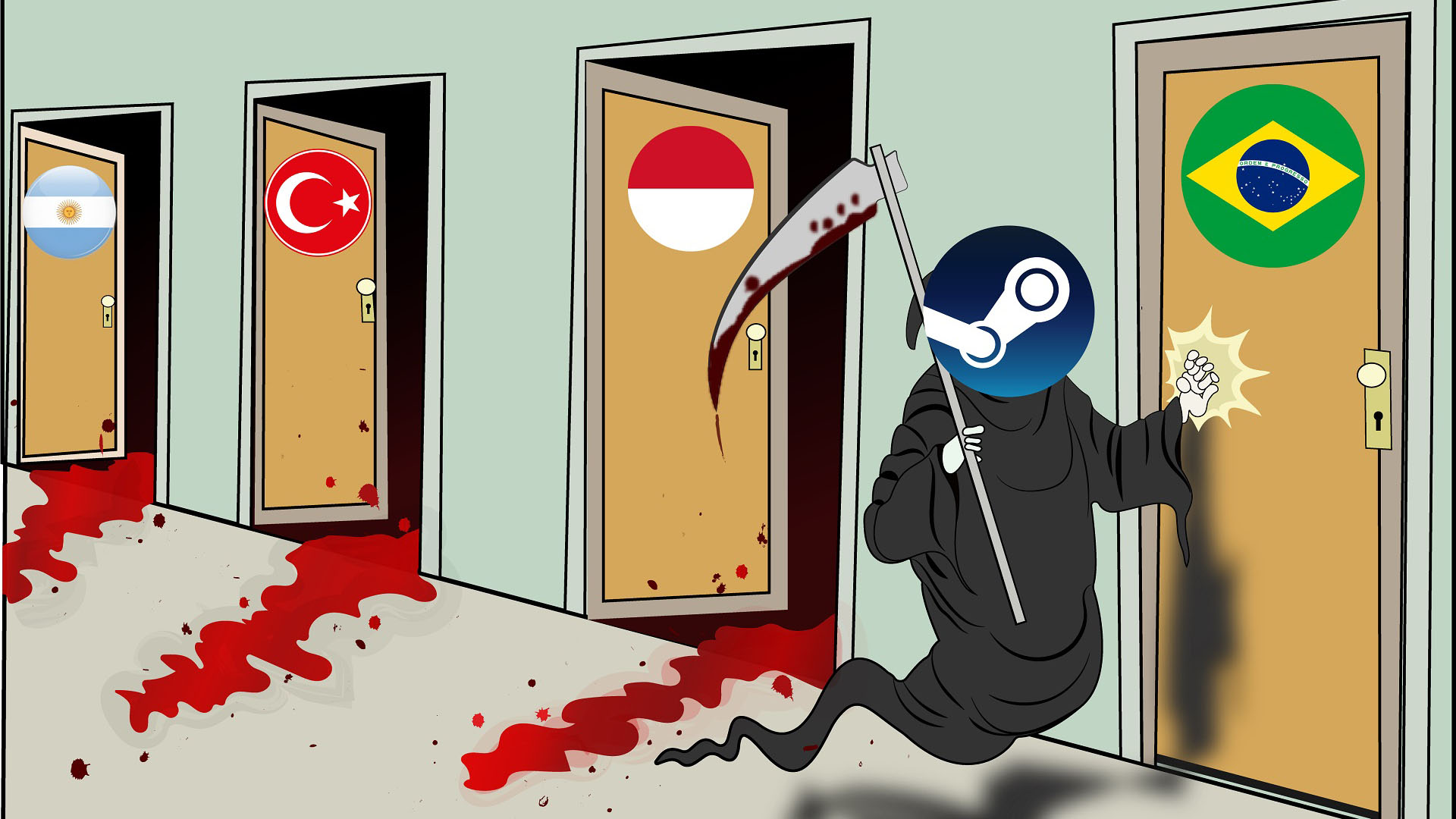
Steam is the biggest digital store for PC games with dedicated users and constant sales coupled with reasonable pricing. The latter may be changing, though, due to a new pricing policy.
The biggest quality of life aspect for many countries is Steam’s care when it comes to regional pricing, as many countries would reach impossible prices on games if they depended solely on USD conversions, however, things seem to be changing rapidly.
Valve announced the change in recommended regional pricing back in October, 2022, which would affect each region differently, with countries like Brazil getting a 50% increase and countries like Turkey and Argentina getting 400% price increases.
Many developers started adjusting prices right after the Best of Steam 2022 Sale, with some games having 387% increases in price.
Through SteamDB, a platform that closely monitors Steam’s database, we can see that games are becoming more costly in some regions when using the Price Change tool.
When it comes to the subject of regional pricing, Valve says:
Valve comment on Steam regional pricing
It’s tempting to treat pricing as a simple problem of foreign exchange rates and tie each currency’s price equivalency to the exchange rate. But that kind of strategy vastly oversimplifies the disparate economic circumstances from one territory to another. And while exchange rates do have macroeconomic consequences, they generally don’t have short term impacts on an individual consumer’s purchasing.
Rather than just pegging prices to foreign exchange rates, our process for price suggestions goes deeper into the nuts and bolts of what players pay for the goods and services in their lives. This includes metrics like purchasing-power parity and consumer price indexes, which help compare prices and costs more broadly across a bunch of different economic sectors. But in the case of games on Steam, we also drill down more specifically to entertainment purchasing to better inform those decisions.
The price changes aren’t mandatory, as Steam lets developers choose if their game will have regional pricing or not, but having Valve give the ‘OK’ for these huge increases definitely feels unwarranted.
It is disappointing to see Valve forsake some of its users, as countries like Brazil and Turkey house a substantial chunk of the platform’s customers.
Valve is also notorious for ignoring countries when it comes to hardware as well, with the Steam Deck only being available on Canada, United States, the European Union, the United Kingdom, Japan, South Korea, Hong Kong, and Taiwan.
It is worth noting that Steam helped curb piracy in many countries by being a user-friendly option that houses reasonable prices when it comes to gaming, so developers who stray too far from reasonable pricing may find themselves short on sales when it comes to developing countries.
Steam users and developers can read more about Valve’s stance on regional pricing here.